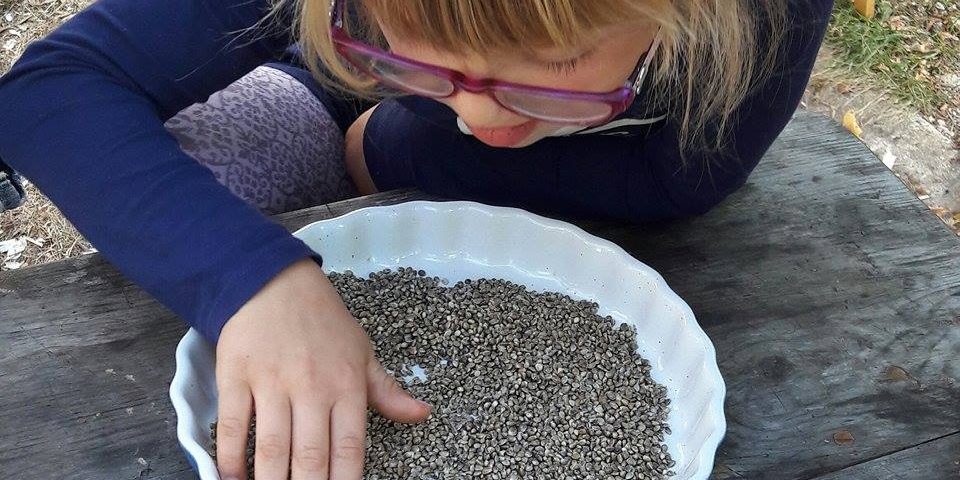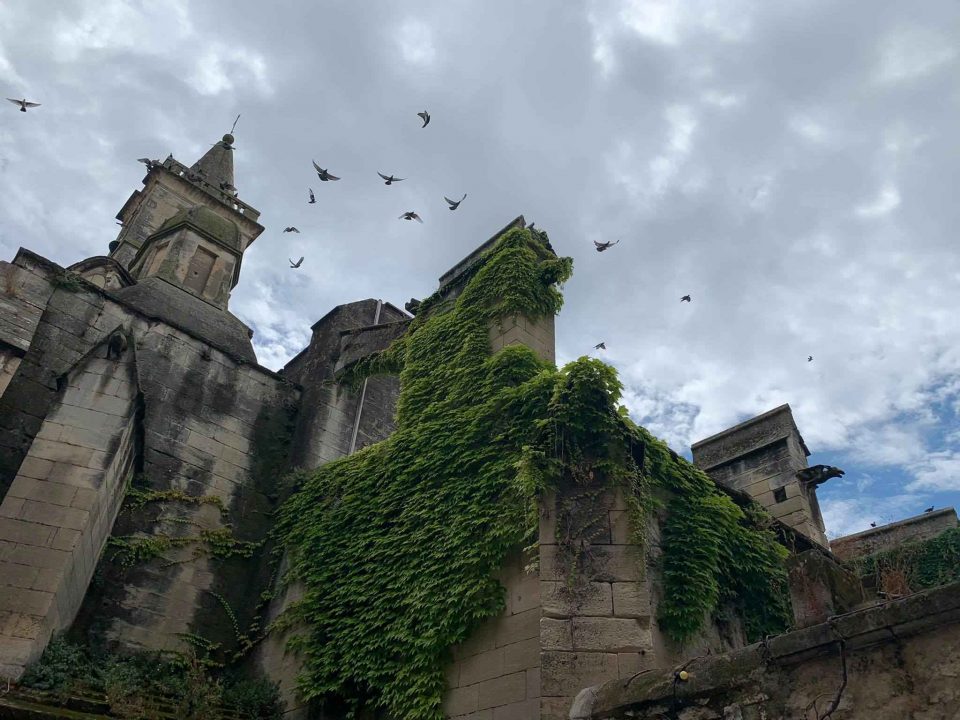
The French Connection: Escape from Cantal
September 23, 2016The Legend of Cahors
October 1, 2016The seasons are changing once again. And in this part of the world, that actually means something. Having spent more than 90 percent of my life in the southern half of California, my exposure to what they call the Four Seasons has been pretty limited, if not thoroughly deprived. But living in Europe, and working the land, the change of seasons means everything. And this is harvest season.
We spent the first day of autumn picking apples. Three or four hundred kilos of apples we collected, more or less, my two Spanish co-workers and I. That’s far more apples than you can fit in the back of a Volvo station wagon, to give you some idea, and considerably more even than you can fit into a trailer on the back of said station wagon. Not bad for the first harvest, and apples are not even among the commercial crops of this farm.
They aren’t necessarily the best apples we’ve ever bitten into, but the variety is impressive, and for the purpose of pressing apple cider, variety is the key ingredient to achieve the richest and most complex flavor. When grandpa moved here 30 years, he began collecting apple trees and put together a small orchard including a few dozen varieties, some red, some green, some sweet, some sour. Some have an excellent crunchy bite, and taste quite bland. Others have great flavor, but with a skin that’s much too thick. Once in a while you find a tree with an overall great apple, but that’s rare.
The next day of autumn was spent on the far more tedious task of cutting and cleaning these 25 crates of apples. News of this exotic apple apple orchard had clearly spread far and wide among the local worm population, and they were quite literally diving in face first. But that left more than enough fruit to keep a half dozen farmhands busy for an entire day, and fill around 100 liter bottles with some of the best apple juice I’ve ever had.
But like I said, apples are not one of this farm’s cash crops, so this time of year brings many more important tasks associated with the fall harvest. As the largest grower of hemp in southern France, we still had plenty to do with the previous week’s hemp harvest, carefully drying then cleaning the seeds in preparation to be pressed for oil. The fibrous parts of the plant had already been separated to be sold off for use as insulation; converting it into fabric is not a viable option on account of the low yield and, more importantly, France’s non-existent infrastructure for hemp textile production. Up until about 100 years ago, however, this was one of the region’s most important crops. The city of Toulouse, in fact, grew to prominence largely from the wealth of the local hemp and flax industries.
For those less knowledgeable about the hemp plant, its colorful history and myriad uses, let me explain that it is cannabis, a very close relative to marijuana, but containing virtually zero psychoactive constituents. It was grown widely in the US for seed, oil, textiles and paper until the 1930s, when all cannabis was outlawed, to be replaced by synthetic fibers and more chemically intensive crops. France also banned cannabis near the beginning of the century, though several countries in East Europe continued growing it.
In 2003 the EU legalized hemp throughout the continent, so that France was forced to recognize its non-drug status and allow its cultivation. Since then, a number of small farmers have gradually been working to revitalize this crop, useful, nutritious and easy-to-grow. Progress has come slowly, and each year they are strictly limited in how much hemp they can plant, yet the demand is high and most of this year’s crop has already sold, or else been set aside for oil extraction. An unusually dry summer has resulted in a very low yield for fiber, so the lion’s share of this year’s hemp harvest consists of seed destined to be pressed for oil.
A few customers are brewers who enjoy using hemp in their beer production. Hemp ale, made popular in California back in the 90s, has also attracted a following in France. Here they use the entire plant—stalks, leaves, seeds and all—and mix it in with the barley and hops for a more dynamic flavor. For this purpose, a cubic yard or two of hemp plants was kept intact and separately dried. This week, those plants appeared thoroughly dry, so I had the pleasure of gathering the material and stuffing it all into a very large pouch. Despite the absence of mind-altering elements, this 50 lb. sack was extremely aromatic, smelling no different than a room full of low-grade marijuana, at least according to what I’ve read in the literature.
Still more important for this farm than the apples and the hemp, are the fields of sunflowers, whose seeds are also pressed for oil, and are due to be harvested in the next day or two. The oil has long been a staple of this family farm and an essential ingredient in all their prepared food products, such as garlic spread and pesto. As organic farmers with something like an obsession over the cleanliness and purity of what they put in their bodies, our hosts go to tremendous lengths to ensure the highest quality in everything they produce. How they make their sunflower oil is a perfect example.
The press is old, simple and unassuming, about as impressive as the rinky-dink engine inside an old Peugeot, but it is one of the keys to their superior quality oil. They’ve been using it for over 30 years, and during the harvest season it runs around the clock. Unlike any commercial oil, even those advertised as virgin cold-pressed, which actually rely on chemical processes for the quickest and most thorough extraction, this machine presses seeds the old-fashioned way. No thrills, no frills, but the slow, cold, mechanical extractions produces results that are undeniable.
Sunflower oil is widely used in Europe as a neutral, tasteless cooking oil. But here, the sunflower oil is anything but tasteless. Just lick a few drops off your finger tip, and the unmistakable taste of fresh sunflower seed shines right through. No other bottle of store-bought sunflower oil even comes close. And the same can be said for the hemp seed oil.
Flax and lavender also play important roles in the poly-culture of this highly diversified organic farm, where mono-cropping is anathema and Round-Up is the butt of many jokes. Indeed, their patchwork of some 60 hectares (150 acres) is made up of at least 50 small fields, but surrounded on nearly every side by conventional farms where chemical fertilizers, pesticides and weed killers are regularly sprayed with reckless abandon.
Most sunflower farmers, for example, give their fields regular treatments of Round-Up at the end of the summer to guarantee that the plants will be thoroughly dead and brown and ready for harvest by a specific date. This makes it easier to schedule the harvest, and various related activities, far ahead of time. The organic farmer’s timetable, on the other hand, remains dependent on a host of unpredictable factors, mainly the weather, so that the work—always more than plentiful—must be scheduled practically one day at a time.
This has been, for us, a very illuminating glimpse into the world of organic farming. We arrived here with little or no real life knowledge or experience about farming on this scale. How many times this month have I been asked, “Oh, so you’ve never done any – – – – before?” Not that anything they do here has come as any great surprise, but the kind of help they need with their daily operations has provided us with countless opportunities to get our hands dirty and learn so many things about this way of living and working.
Much of it has confirmed what we have long suspected and believed about the differences between conventional and organic agriculture, and many things have surprised us about the conventional methods of small-scale farming in France, but ultimately, we have more respect than ever for the organic farmers and their families, wherever they may be.





